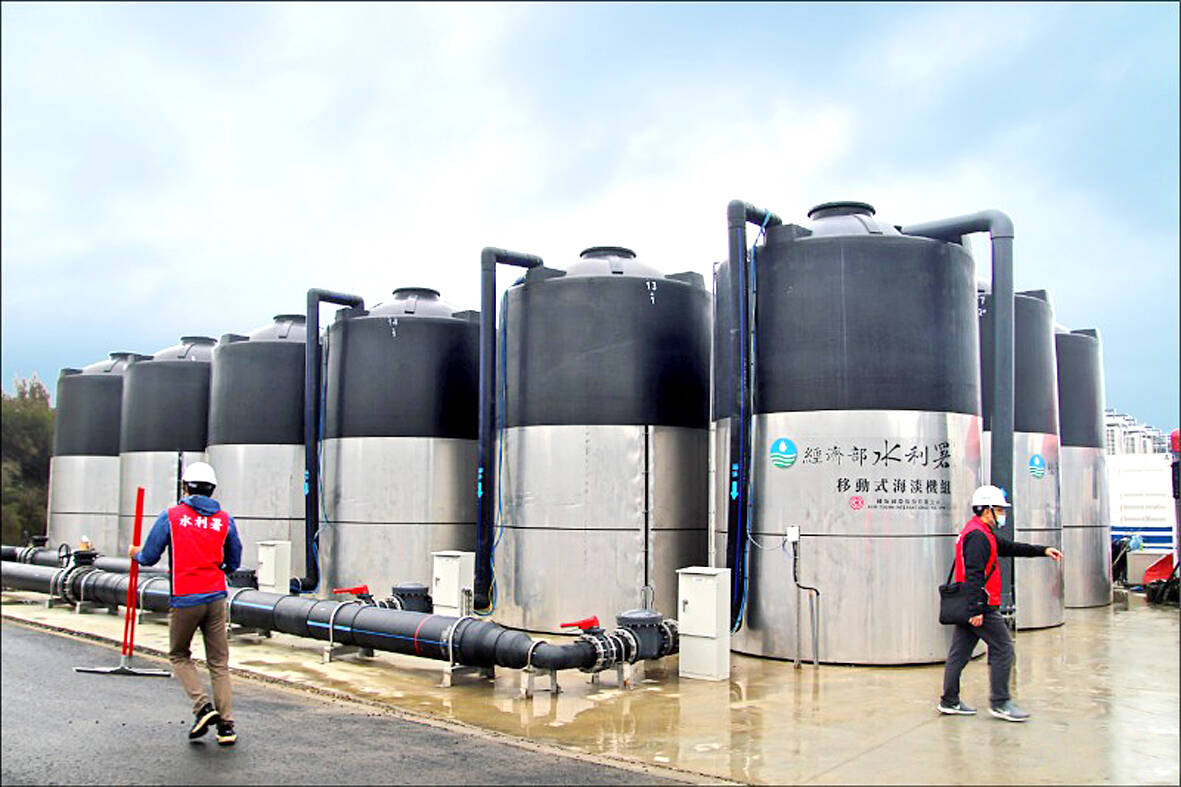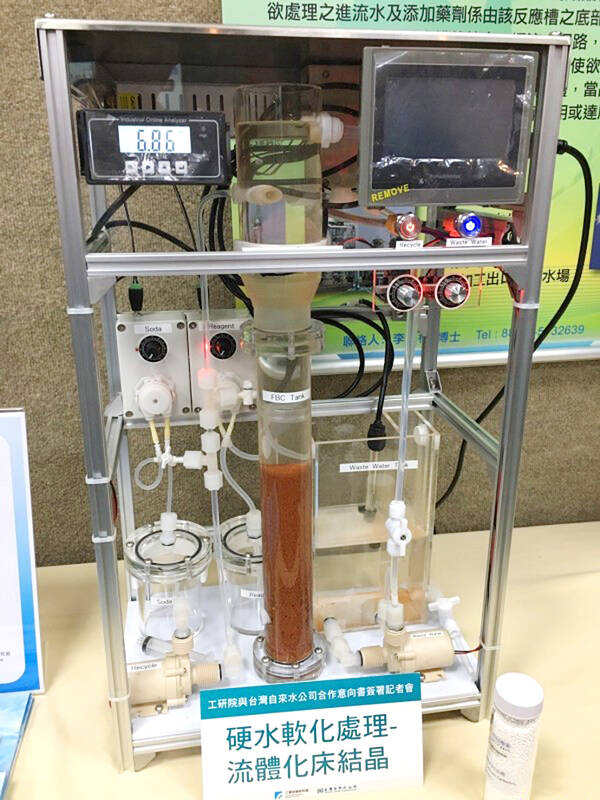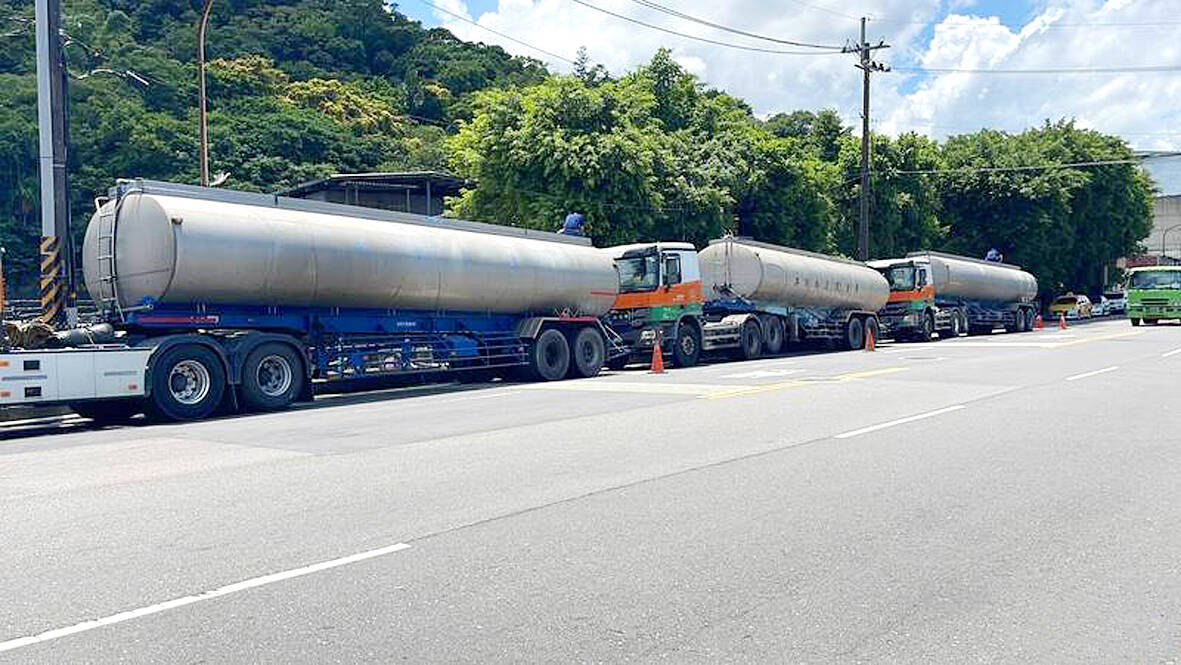Sometimes, the government does the right thing in the end.
Late last year, the Ministry of Economic Affairs (MOEA) decided to scrap a highly controversial plan to construct a 17.2km-long tunnel designed to divert water from Nanshi Creek (南勢溪) in New Taipei City’s Wulai District (烏來) to the upper reaches of Shihmen Reservoir (石門水庫) in neighboring Taoyuan.
As detailed last year in the July 27 Taipei Times (“Will Nanshi Creek be sacrificed on the altar of economic development?”), opponents of the project feared that constructing the tunnel would devastate a near-pristine watershed.

Photo courtesy of ASE
On Nov. 23, the MOEA’s Water Resources Agency (WRA) announced that the proposal had been withdrawn.
“Had the project been approved, it would’ve been a lose-lose situation for both taxpayers and the environment. Its shortcomings were so obvious that we didn’t accept the MOEA’s wish to suspend the process. Instead, we insisted that it be withdrawn completely,” says Huang Tai-hua (黃泰華), one of the activists who campaigned against the project.
“We see this as a case of using democratic mechanisms to protect the natural environment,” says Huang, CEO of the Taiwan Ecological Engineering Development Foundation.

Photo: Huang Mei-chu, Taipei Times
FLAWED PROPOSAL
According to Huang, the major flaws in the proposal were the mistakes made by the WRA when selecting an upstream abstraction site, and that the tunnel would probably be ineffective in mitigating north Taiwan’s water woes.
Huang explains that he and fellow activists communicated these shortcomings to Control Yuan members Jao Yung-ching (趙永清) and Tien Chiu-chin (田秋堇), and also to Democratic Progressive Party Legislator Chiang Yung-chang (江永昌). Jao is honorary chair of the Jane Goodall Institute Taiwan and director of the Taiwan Black Bear Conservation Association; Tien was founding president of the Taiwan Environmental Protection Union’s Yilan branch.

Photo: Yang Mian-chieh, Taipei Times
After visiting the watershed to gain an in-depth understanding of the project, Chiang, Jao and Tien joined forces with those pressuring the MOEA to drop the proposal.
“Throughout the process, we also expressed our views via the media, while trying to keep the topic pure. We didn’t want it to become a blue-green political issue, as that would’ve blurred the question,” says Huang.
Even so, because the project’s cancellation occurred just days before last year’s local elections, it’s hard not to suspect that more weight was attached to political factors than to environmental considerations. As late as Nov. 4, Minister of Economic Affairs Wang Mei-hua (王美花) hadn’t given up on the diversion tunnel, telling Chiang and other lawmakers that the MOEA was continuing its efforts to win over the Environmental Protection Administration, Wulai’s indigenous communities and other stakeholders.

Photo: Lu Hsien-hsiu, Taipei Times
A separate Jan. 6 announcement by the MOEA is also reason for cautious water-related optimism.
OPTIMISM
New rules taking effect this month require entities that use more than 9,000 cubic meters of water per month to pay an additional NT$3 per cubic meter during the November-to-April dry season.
Taiwan Semiconductor Manufacturing Co (TSMC, 台積電), oil refiner CPC Corp, Taiwan (CPC, 台灣中油), AU Optronics Corp (AUO, 友達光電), Innolux Corp (群創光電) and Formosa Plastics Group (FPG, 台塑集團) are among the estimated 1,700 to 2,200 enterprises that can expect their water bills to rise.
Schools, hospitals, and other social welfare institutions are exempt. So too are farming and livestock operations deemed necessary for Taiwan’s food security.
For years, commentators have argued that, if water simply became pricier, households and industrial consumers would quickly find ways to reduce the amount they use — and shortages like those in 2021, which led to rationing and hampered the functioning of hydroelectric power plants, could be averted.
In an April 8 article last year about Taiwan’s water problems, Earth.org described the price of water as “jaw-droppingly low… among the lowest in the world” — a quarter of the average price in the US, and just one sixth of the cost in the UK.
The Legislative Yuan empowered the authorities to collect such fees back in 2016, but not until late 2021 — following several rounds of discussion and negotiation between the MOEA and representatives of various industries — was a draft formula published.
Implementation, originally scheduled for July last year, was pushed back for two reasons, local Chinese-language media reported. First, as inflation accelerated, the government dared not add to the cost pressures facing industry. Second — and more surprising, given the severity of the previous year’s drought — the authorities thought that the nation’s current water-supply situation was “stable.”
To encourage thirsty factories to find alternative sources of water, the new rules stipulate that seawater (which some industrial plants use to cool machinery), recycled water and rainwater collected on-site will not be included when calculating monthly water consumption.
What’s more, the additional tariff will be reduced to NT$2 per cubic meter or even NT$1 if enterprises reach water-recycling targets set by the MOEA. They will also enjoy tax breaks if their consumption of recycled water and/or seawater exceeds 6,000 cubic meters per month.
Revenues from this new tariff will go into the WRA’s Water Resources Operation Fund, and used to better manage water resources, promote water conservation, and develop renewable water resources.
However, the rate set, and the way in which it’s being introduced, may well diminish the impact of the new fee.
No one will have to pay the full NT$3 until June 2025. Until then the tariff is halved, the MOEA saying this is to give companies a chance to invest in water-saving technologies. Loss-making enterprises can also apply to defer payment of the tariff, or pay it in installments.
Both the NT$3 tariff and the 9,000 cubic meters per month threshold have been criticized as too low. A March 19, 2021 report by the Environmental Information Center (環境資訊中心, e-info.org.tw) quotes Taiwan Water Resources Protection Union Director Jennifer Nien (粘麗玉) as saying that the collection threshold should be no higher than 1,000 cubic meters per month, and that the levy should start at more than NT$3 per cubic meter.
She’s right in at least one sense. Because of Taiwan’s dense population, per capita rainfall is less than one eighth of the global average. Even though Taiwan’s 50 thirstiest enterprises account for almost half of the country’s water consumption, saving water is a responsibility that all should share.
Steven Crook, the author or co-author of four books about Taiwan, has been following environmental issues since he arrived in the country in 1991. He drives a hybrid and carries his own chopsticks. The views expressed here are his own.

That US assistance was a model for Taiwan’s spectacular development success was early recognized by policymakers and analysts. In a report to the US Congress for the fiscal year 1962, former President John F. Kennedy noted Taiwan’s “rapid economic growth,” was “producing a substantial net gain in living.” Kennedy had a stake in Taiwan’s achievements and the US’ official development assistance (ODA) in general: In September 1961, his entreaty to make the 1960s a “decade of development,” and an accompanying proposal for dedicated legislation to this end, had been formalized by congressional passage of the Foreign Assistance Act. Two

March 31 to April 6 On May 13, 1950, National Taiwan University Hospital otolaryngologist Su You-peng (蘇友鵬) was summoned to the director’s office. He thought someone had complained about him practicing the violin at night, but when he entered the room, he knew something was terribly wrong. He saw several burly men who appeared to be government secret agents, and three other resident doctors: internist Hsu Chiang (許強), dermatologist Hu Pao-chen (胡寶珍) and ophthalmologist Hu Hsin-lin (胡鑫麟). They were handcuffed, herded onto two jeeps and taken to the Secrecy Bureau (保密局) for questioning. Su was still in his doctor’s robes at

Last week the Democratic Progressive Party (DPP) said that the budget cuts voted for by the China-aligned parties in the legislature, are intended to force the DPP to hike electricity rates. The public would then blame it for the rate hike. It’s fairly clear that the first part of that is correct. Slashing the budget of state-run Taiwan Power Co (Taipower, 台電) is a move intended to cause discontent with the DPP when electricity rates go up. Taipower’s debt, NT$422.9 billion (US$12.78 billion), is one of the numerous permanent crises created by the nation’s construction-industrial state and the developmentalist mentality it

Experts say that the devastating earthquake in Myanmar on Friday was likely the strongest to hit the country in decades, with disaster modeling suggesting thousands could be dead. Automatic assessments from the US Geological Survey (USGS) said the shallow 7.7-magnitude quake northwest of the central Myanmar city of Sagaing triggered a red alert for shaking-related fatalities and economic losses. “High casualties and extensive damage are probable and the disaster is likely widespread,” it said, locating the epicentre near the central Myanmar city of Mandalay, home to more than a million people. Myanmar’s ruling junta said on Saturday morning that the number killed had